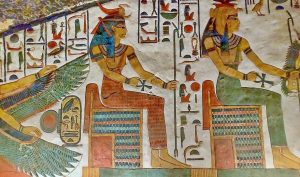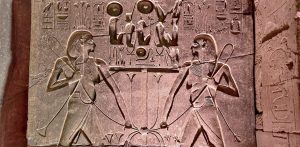What exactly is a mummy?

A mummy is someone or anything that has had its physical body preserved. Egyptian mummies are purposeful, implying that certain rites or processes were conducted on the remains of a human or animal to preserve the body. Some mummies are inadvertent, which implies the body was preserved due to natural circumstances.
Ancient Egyptian Mummification Types
The first thing that springs to mind when thinking of mummification in ancient Egypt is human mummified bodies, such as the mummies of the Kings.
Other animals, such as dogs, cats, and birds were part of the ancient Egyptian mummification. They also preserved food so that they may enjoy it in the afterlife. A “victual mummy” is what this is called.
Who was it that was mummified?
Pharaohs were frequently mummified and buried in grandiose tombs throughout their reign. Non-royal people were also mummified at this time. Although their mummification was not as extensive as that of royalty, depending on their family’s financial resources, it was nevertheless impressive nonetheless.
Simple methods of mummification for the poor include cleaning out the intestines and coating the corpse with natron, then putting them in the bare minimum of wrappings and burying them in a small grave or cave.
Steps of the Ancient Egyptian Mummification Process
- Body cleansing:
The ancient Egyptian mummification procedure began with the body being washed with Nile River water, which was considered sacred since it aided in the growth of their crops.
- Taking the brain out:

Using a brain hook, the next step was to remove the brain. They threw away the brain.
- Taking out the organs:
The priests would then proceed to extract additional internal organs. The heart was considered the most essential since it was thought to be the seat of one’s spirit and existence. After that, the organs were put in Canopic jars (the 4 sons of Horus). Each organ was placed in one of four canopic jars, each guarded by one of Horus’ Four Sons.
- Using Natron Salt:

After the organs were removed, the ancient Egyptian mummification priests used natron to wrap the body both inside and out. Natron is a salt that is found naturally in the Egyptian desert and absorbs moisture and fat. Every several weeks, they had to replenish the Natron. This part of the procedure took roughly 40 days to complete.
- Wrapping the body:

It was then time to wrap the mummy. In many respects, wrapping the mummy was significant. The priest read charms to safeguard and reawaken them in the afterlife while the arms and legs were wrapped.
- Ritual of opening the mouth:

The priest restored the mummy’s five senses during the “Opening of the Mouth” rite. In the afterlife, the mummy would require their senses.
- Adorning the body:
Amulets were placed inside the mummy’s wrappings by the priests. People think that wearing an amulet would protect the person who wears it. The amulets were thought to ensure safe passage and survival in the afterlife by the ancient Egyptians. King Tut, for example, had almost 140 amulets strewn around his wrappings.
With the wrapped mummy, the ancient Egyptians would include a heart scarab beetle and a pectoral. They’d also cover the shrouded mummy’s face with a mask. Because the mummy’s face was shrouded in wrappings, they were anxious that the mummy’s soul would be unable to identify their body.
- Incorporating the mummy inside the coffin:
The mummy would be entombed in a coffin that could take on a variety of forms. It’s an anthropoid coffin, which means it’s shaped like a human body (wide at the shoulders and then narrow).
The heart is being weighed

The ancient Egyptians thought that their hearts would be weighed against the goddess Maat’s feather on the scales. Maat symbolized the concept of order, which signified “what is proper” in this context. Anubis, the deity of embalming, also appears in this scenario. He wears a jackal’s head.
“Legendary Animal” Ammit

The devourer was Ammit. The monster had a crocodile’s head, a lion’s body, and the bottom of a hippopotamus. Ammit would consume someone’s heart if it was heavier than Maat’s feather.
They weren’t transported anywhere to be punished after Ammit consumed their hearts; they just vanished.
“Spirit of the Deceased” (Ba):

Finally, the Ba and the physical mummies would be reconciled. The Ba symbolized the deceased’s personality. Every night, the mummy had to be rejoined with the Ba in order to endure the afterlife.
The Ancient Egyptian Mummification in Today’s research: Mummies are continuously being discovered. A record of sickness is preserved in mummy cells, which physicians and scientists may analyze to learn more about viruses and bacteria. Mummies can help us understand more about ancient societies and create better vaccinations and other therapies by allowing us to study them.
Take one of our Egypt Tour Packages to see the fresh discoveries and Royal Mummies, as well as a lovely Nile Cruise experience in Luxor and Aswan to see the everlasting location of the Ancient Egyptian Mummies at the Valley of the Kings.
Useful links:
- civilization of ancient Egypt
- deluxe tours
- Egypt UNESCO tours
- Best Tourist Attractions
- Explore Egypt Destinations
- Anubis and the mummification in ancient Egypt






